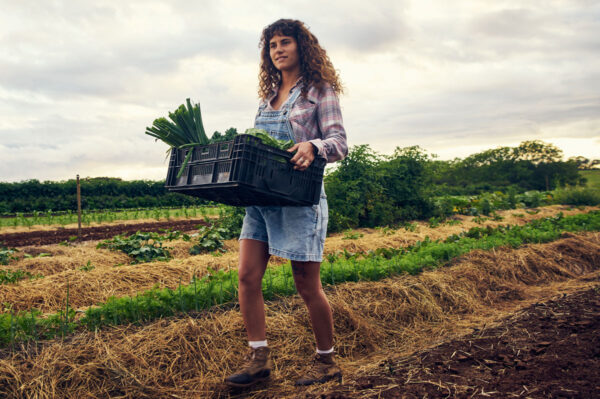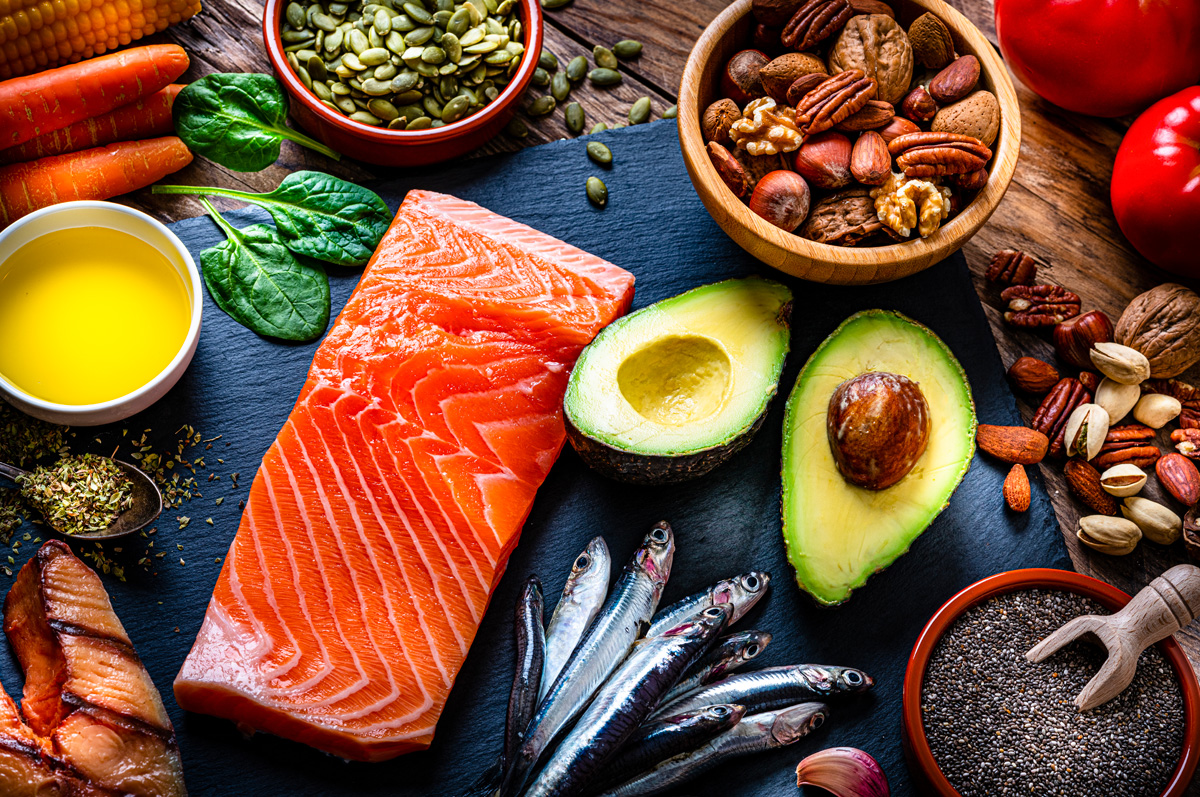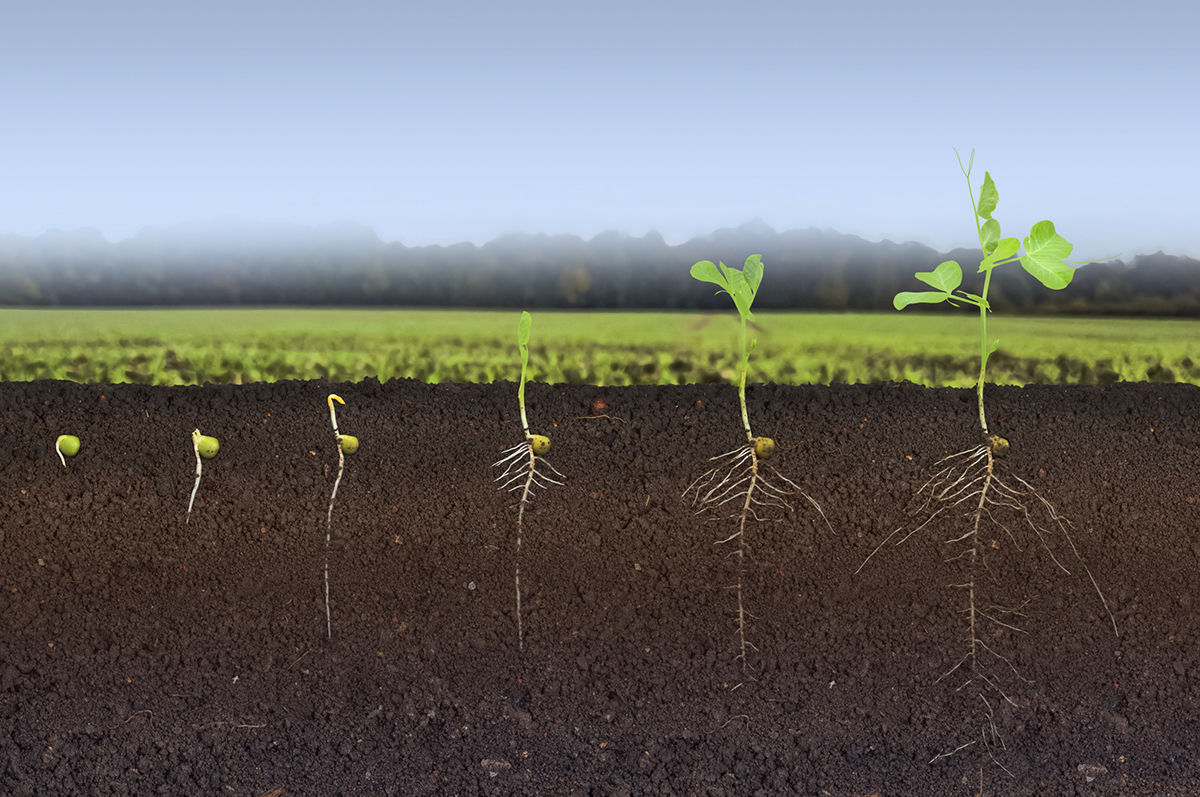Healthy Eating, Healthy Earth
How a Sustainable Diet Requires Sacrifice—and Benefits Us All
By Ruby Scalera
What makes for a healthy meal? It can be difficult and overwhelming to navigate the marketing, standards, and greenwashing when it comes to healthy, sustainable eating, but it doesn’t have to be. In many ways, to look forward is to look back, at the way that diet and nature have long intersected, and how a balance of human behavior and Earth-forward practices can create diets with minimal impact on our body and our world. From health benefits to cost savings, sustainable eating practices are innately beneficial to the individual, and they have an impact on the earth that extends well beyond our current choices.
“One of the silver linings of the pandemic was that people paid a lot more attention to how our health is interconnected with others’ health and with the health of our ecosystems,” explains Mira Kohl, Communications Manager for Sustainable Harvest International (SHI), an organization that partners with smallholder farmers to embrace regenerative and sustainable farming practices. “Within the context of food production, it meant a greater awareness of just how important and delicate our local food systems are…After all, we are all connected to each other and our environment through a web of biodiverse ecosystems.”
Our food system interacts with climate, health and wellness, and resilience in extensive and complex ways, and those connections are shown in both the monetary cost and externalities of our food. According to the U.N. Food and Agriculture Organization in January 2022, a transition toward “sustainable, climate-resilient food production and consumption based on healthy diets” could reduce costs related to food and climate change by $1.3 trillion dollars globally by 2023. The transportation and storage of goods and resources requires a significant use of energy. Three million tons of pesticides are applied around the world each year, their residue coating the food we eat and permeating the shrinking groundwater supplies and the soil in which our food is grown, and even the packaging used during production and consumption becomes part of a larger cycle of waste and landfill management.

Farmers Markets typically feature farm vendors selling agricultural products directly to customers at a recurrent physical location.
According to the Intergovernmental Panel on Climate Change (IPCC), the emissions from global food systems contribute to 21-37% of total anthropogenic greenhouse gas emissions produced. But environmental impacts extend well beyond emissions. Agriculture is a significant driver of deforestation. According to the Stockholm Environment Institution, the agriculture industry is responsible for 90-99% of deforestation in the tropics, either directly or indirectly. While the impact is significant, only about 45-65% of that land is eventually used for agricultural production, highlighting one stage of food production where waste and impactful practices can be mitigated or even eliminated.
Additionally, the existing global food system threatens biodiversity, or the ecology of habitats and ecosystems that make up our natural world. According to the U.N. Environment Programme, it is actually the primary driver of biodiversity loss. The data indicates that agricultural production alone is the main threat facing 24,000 species, more than 86% of those on the endangered list.
“If we are serious about mitigating climate change, then we desperately need to partner with small-scale farmers in adopting agroecological practices,” Kohl says, referring to a sustainable farming practice that works in concordance with nature. SHI partners directly with these farmers to promote more sustainable practices and reduce agricultural greenhouse gas emissions. “We believe that small-scale farmers are the key to a just and sustainable transformation of our world’s food systems.”
The challenges and impacts may be large, but the solutions are often small.
Many of the methods used by small-scale and sustainable farmers inherently create resilience, reduce impact, and ensure replenishment. Scaling up those benefits of small-scale farming means addressing stages of global food production where excess waste is produced and ecological impacts are most apparent.
Gayathri Ilango is the founder and CEO of The Circular Farm, an organization dedicated to achieving climate-forward agriculture practices through the integration of modern technology and support for small production farmers. She sees small-scale food production as the answer to many of these pressing questions.
Shopping seasonally can not only support local and sustainable farms but is often more affordable.
“Our measure for climate-smart food production should start at farm level,” Ilango says. “The nature of practicing industrial agriculture cannot be the solution to address food insecurity, as we will lose environmental sustainability… Adopting methods that have been successful in restoring soil health, water usage, and bio fertilizer with diverse cropping patterns are very important.”
Ilango has seen a growing demand for ethically and sustainably sourced food, and when these methods are incorporated in growing practices, “our future towards lowering carbon emissions from food productions can be achieved,” she says.
Of course, agriculture isn’t the only source of the food system’s environmental impact. Sparsha Saha, a lecturer at Harvard University specializing in food, gender, and politics, points to individual food choices.
Saha’s speciality is on meat production, and the impact of animal agriculture on the environment. She explains that 40% of the Earth is used for farmland, and that 83% of that farmland is used for animal-based foods, which produces just 18% of the calories consumed globally. According to researcher Matthew N. Hyeck, shifting all global food production to plant-based by 2050 could allow for the sequestration of 99% to 163% of carbon.
Saha says that part of the complexity of animal-sourced food production is in accounting for supply chain externalities that aren’t reflected on the label. That means that even when the consumer believes they are purchasing locally-sourced and low-impact meat, they can still be unknowingly contributing to the larger emissions output.
“Transport, itself, is a much smaller part of this problem than we think,” Saha explains. “For meat, the problem is that feed… Even if you’re buying local, that feed isn’t local.”
The perfect diet—one that is healthy, environmentally low-impact, cost-efficient, low-waste, fairly sourced, and pesticide-free—doesn’t exist. But there are simple steps any eater can take each day, from home, work, and school, that can add up to significant impact. The myriad shortcomings of modern food production can be seen as trade-offs or as opportunities—ways to reduce our impact without vastly changing our quality of life.
This map displays locations of Farmers Markets in the United States.
“If the individual has the knowledge and has the access, that’s when the responsibility emerges,” Saha says. “Do you want to be part of a solution to the planetary crisis?”
Saha recommends following the Meatless Monday practices, which reduce annual meat consumption by nearly 15%. Shopping seasonally can not only support local and sustainable farms but is often more affordable. The food likely travels a shorter distance, reducing transportation emissions and lasting longer in the fridge or pantry, which help to reduce food waste.
“Buy locally and eat seasonally whenever possible,” Kohl says. “But like all habits, it’s best to build them over time. Don’t be paralyzed by perfectionism, because perfection is neither realistic nor sustainable. Rest assured that every change you make, no matter how small, multiplied over time, will have a tremendous impact.”
These choices often have a positive impact on the body, too. Eating sustainably can have significant health benefits, like reducing the risk of obesity, cardiovascular conditions, and diabetes. According to the U.N. Food and Agriculture Organization, sustainable diets are consistently more diverse (due to seasonal eating), rich in beneficial oils and fats, and low in processed foods or food that are high in fats, sugars, or salts. Sustainable diets are also more moderate in meat and dairy consumption, which contributes to an increase in the consumption of fruits, vegetables, legumes, and nuts. Fruits and vegetables provide essential vitamins and nutrients, legumes help to lower blood sugar and blood pressure, and nuts contribute to protein intake while helping to manage cholesterol.
Individuals can begin making small changes towards a more sustainable and healthy diet at home today. Shop your local market to connect with your community, support small businesses and farms, and reduce your environmental impact. Eat with the season for healthier, more nutritious, and better-tasting food that lasts longer and reduces food waste. Grow your own garden or start a community garden to support local ecology, access fresh produce, and even improve the air quality in your neighborhood. In the end, these changes can mean savings for your wallet, improved health and wellness, and a lower environmental impact for the next generation and beyond.
“To see this global transformation, we need all hands on deck,” Kohl says. “Individuals, corporations, and global governments all have a critical part to play.”

How do local organic farms benefit the community?
Local organic farms are small-scale agricultural operations that produce food without the use of synthetic pesticides, fertilizers, or genetically modified organisms (GMOs). These farms typically operate within a community or region and sell their products through local markets, community-supported agriculture (CSA) programs, or farm-to-table restaurants.
The value of local organic farms to a community is multifaceted.
LocalHarvest connects people looking for good food with the farmers who produce it.
Buying local is about enjoying real food, grown yourself or purchased from people you trust. It’s about developing strong local economies and producing food on a human scale. It’s about eating seasonally, practicing the art of cooking, and sitting down to enjoy meals together.
LocalHarvest provides a searchable database of local food producers, including farmers, ranchers, fishers, and artisanal food producers. Consumers can use the platform to find local food sources near their location and learn about the farms and farmers who produce the food. The platform also offers resources and information on sustainable agriculture, organic farming, and related topics.
Want to learn more or get involved? Check out these resources!
Find a local farmers market near you
Learn about climate-forward agriculture practices







